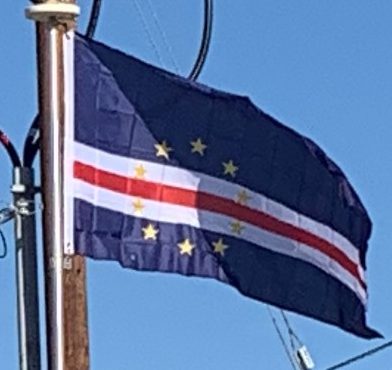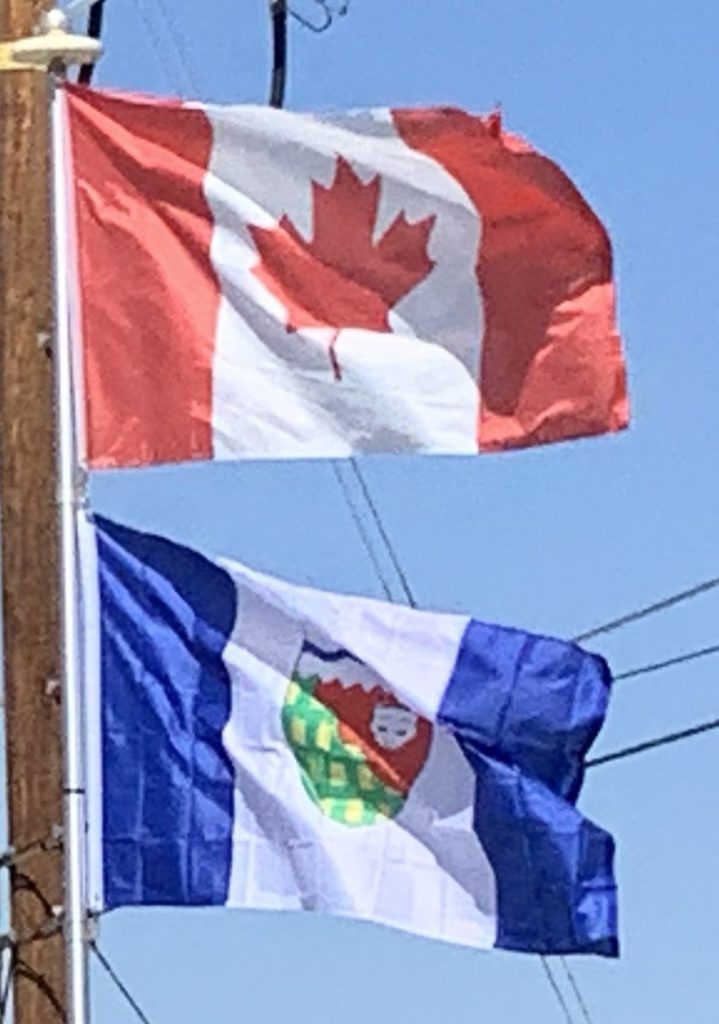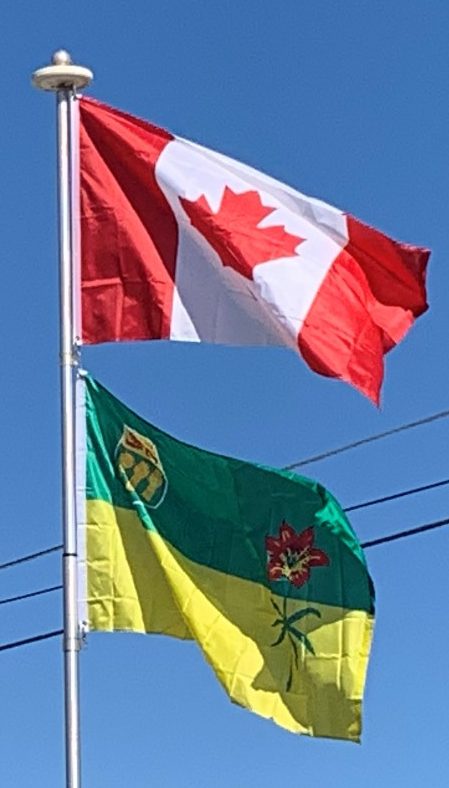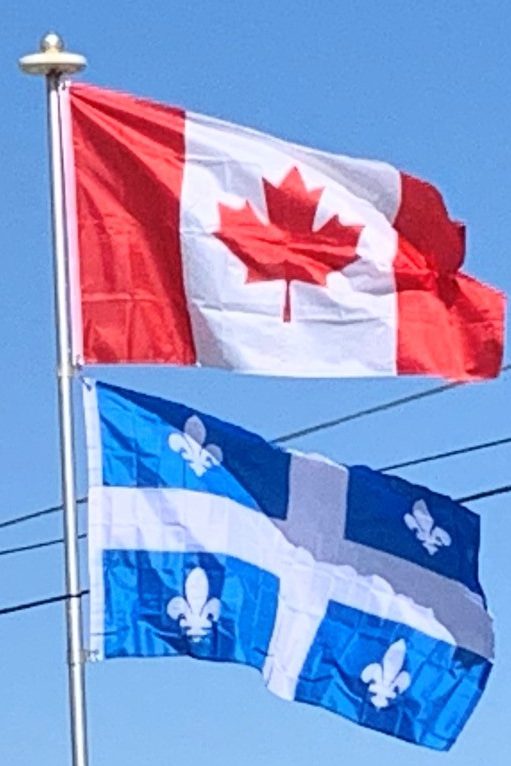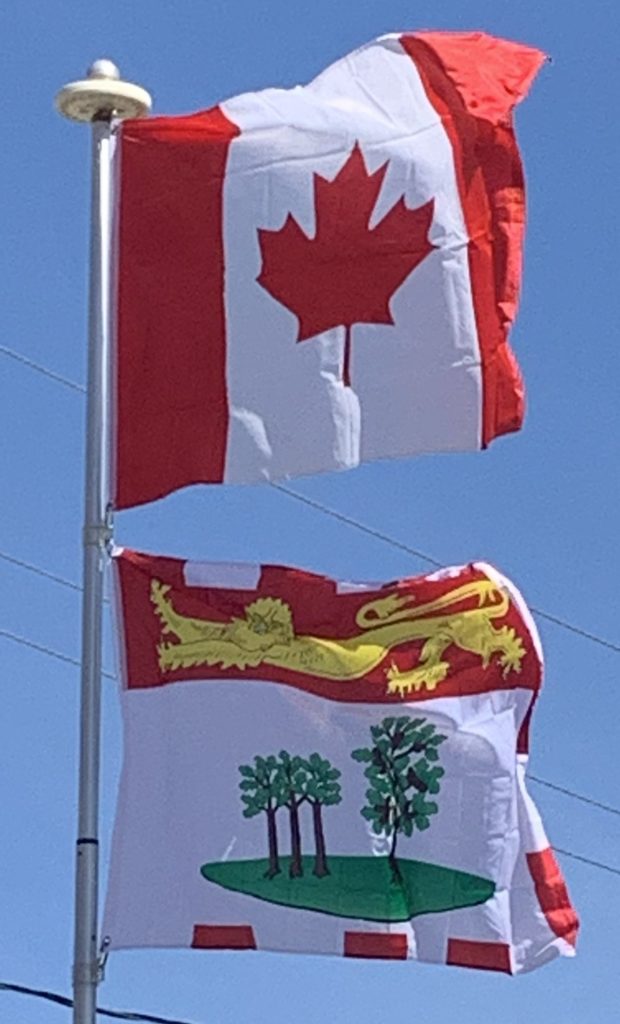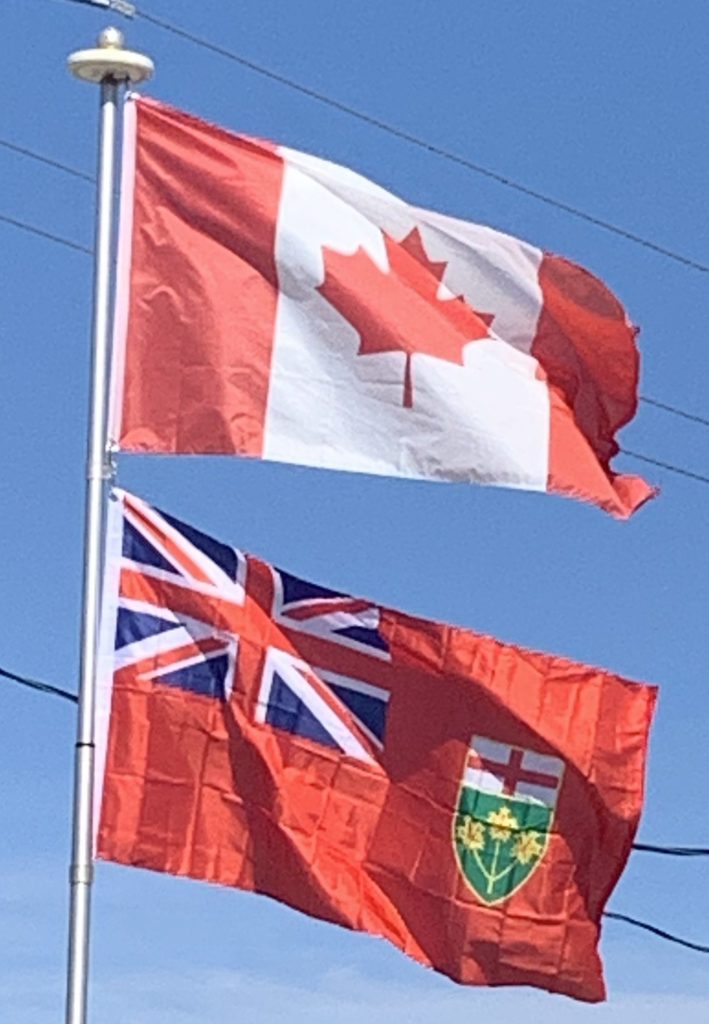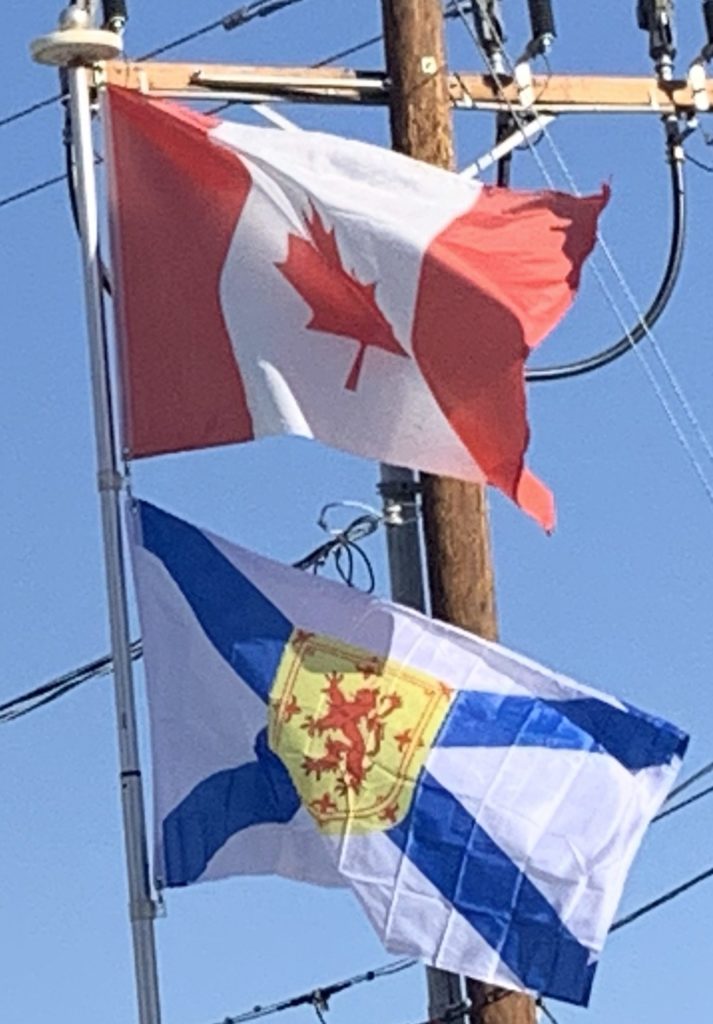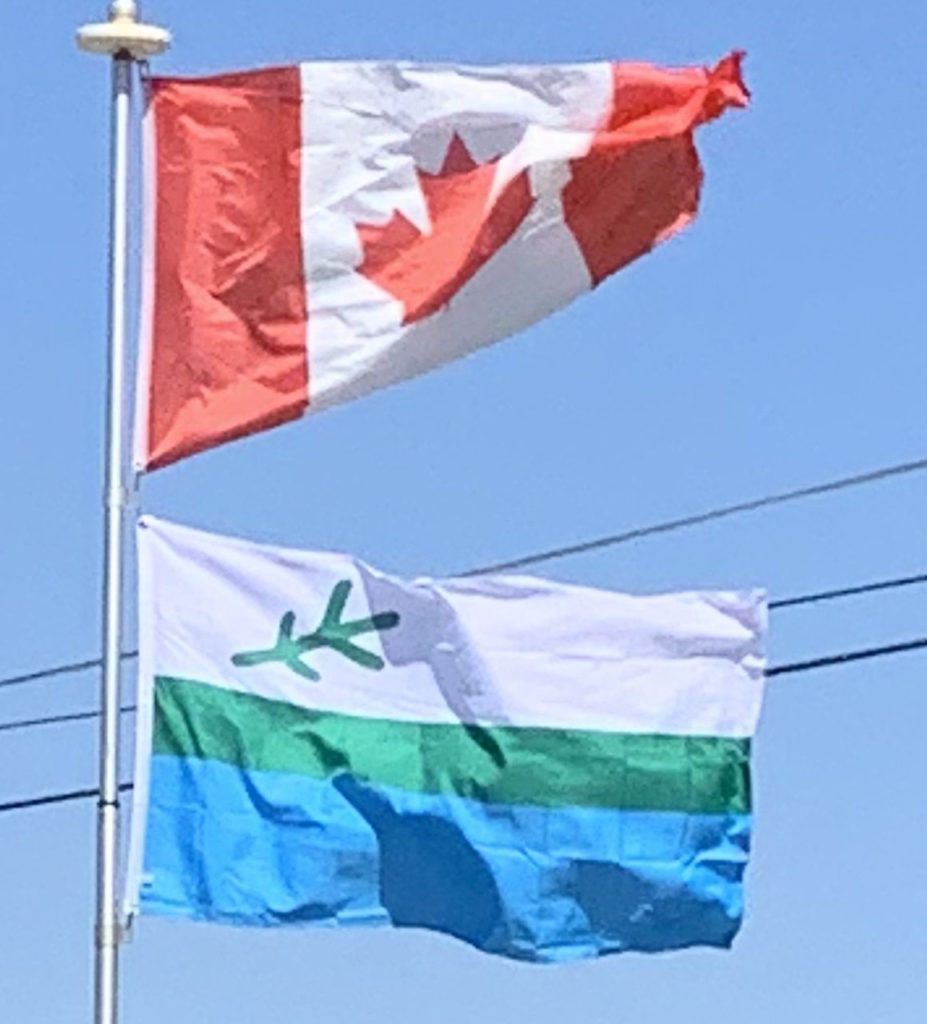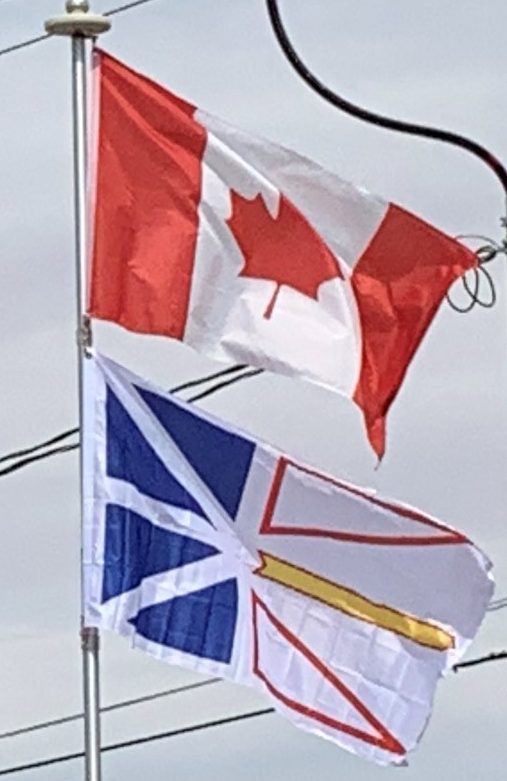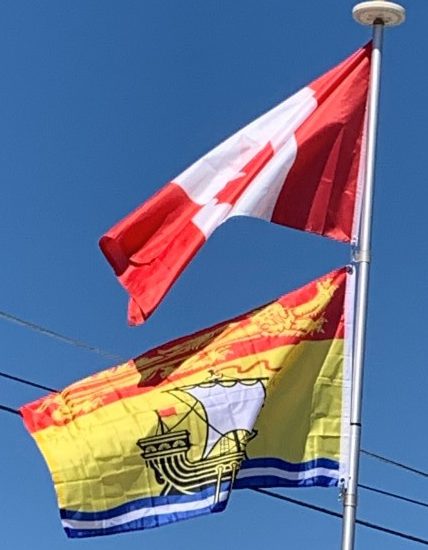he flag of Quebec, called the Fleurdelisé (the Lily-flowered) represents the province of Quebec. It consists of a white cross on a blue background, with four white fleur-de-lis.
It was adopted by the government of Quebec during the administration of Maurice Duplessis (March 9, 1950). It was the first provincial flag officially adopted in Canada, first shown on January 21, 1948, at the Parliament Building of the National Assembly in Quebec City. Quebec’s Flag Day (January 21) commemorates its adoption each year, though for some time it was celebrated in May. At least one parade marked the flag’s 60th anniversary in January 2008.
The Fleurdelisé takes its white cross from the royal flags of the Kingdom of France, namely the French naval flag as well as the French merchant flag.
Its white fleurs-de-lis (symbols of purity) and blue field (symbolizing Heaven) come from a banner honouring the Virgin Mary. One such was reputedly carried by French Canadian militia at General Louis-Joseph de Montcalm’s victory at Carillon.
The flag is blazoned Azure, a cross between four fleurs-de-lis argent. Its horizontal symmetry allows both sides of the flag to show the same image.
